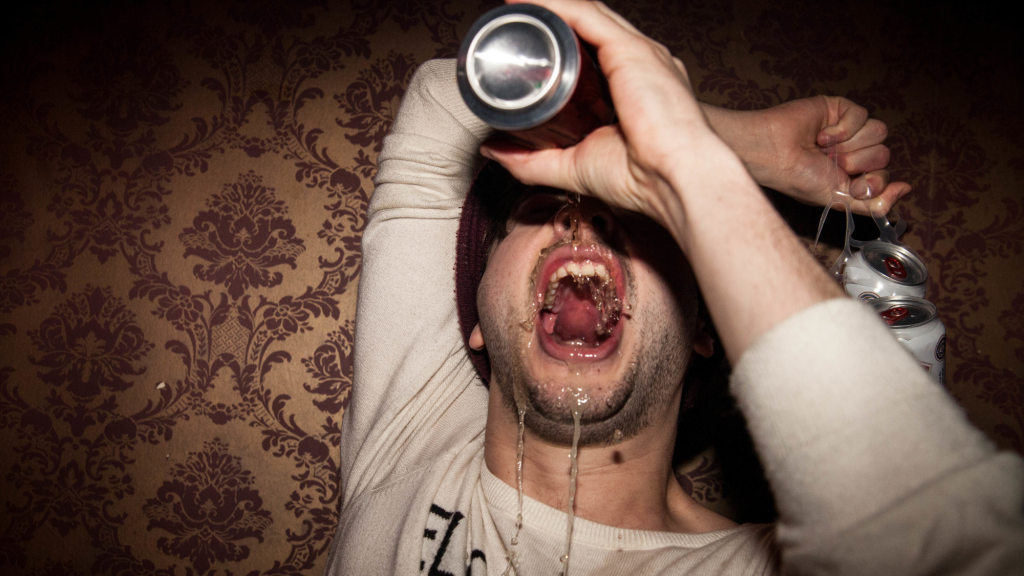A fashion subculture that uses medical imagery – like pills, plasters, syringes and even razorblades – to shatter stigmas and kick off conversations around mental health? It sounds unconventional, but that’s exactly what menhera is all about.
Menhera, or “mental healther” in Japanese, pairs the now-famous pastel-toned kawaii look with still-taboo subjects like self-harm, PTSD and chronic illness. Its fans say the look has prompted an entire community to speak more openly about mental health whilst being able to keep up a cute aesthetic.
Videos by VICE
The style originated in the Harajuku district of Japan’s capital, Tokyo, which has for years birthed outlandish fashion trends – so much so that “harajuku” or “Harajuku Fashion” has become a byword for a staggering variety of subcultures. It’s perhaps no shock that menhera was spawned in a nation that has a complicated relationship with mental health issues, as well as a famously high suicide rate; a country where suicides from overwork even have their own name: karo jisatsu.
The hashtag #menhera has – to date – accumulated 69.4m posts on TikTok and 131,000 posts on Instagram worldwide; all of that content creating a global gallery of glittery razorblades, silver syringes and noose necklaces. To outsiders, the style is striking and can seen extreme. But people within the community say that it’s helped them talk about their own mental health – and that the world has a lot to learn from it.
Addy Somers (@addyharajuku), 23, is internationally recognised as one of the top UK-based content creators within the Harajuku and menera subcultures. Her fun, bite-sized chunks of content on the subject was what led me to discover menhera. Over seven years, Somers has built a following of 100,000 Instagram followers and more than half a million on Tiktok.
“I personally wear menhera every day. The other day I wore a box cutter as a necklace and beaded candy jewellery which included pills… It tells a subversive story,” Addy says. “It draws people in because it’s more digestible for the average person. Yes, it still stands out as it’s slightly ‘weird looking’ but it’s not intimidating… I think it’s allowed people to feel like they look cute, whilst also telling a story about the wearer.”
What the wearer chooses within menhera is often highly personal. Your clothing and accessories is a canvas for expression that can change depending on how you feel that day or the topic affecting you. This is effectively a form of what is commonly described as “vent art”, a type of expression where a topic or emotion is “vented” creatively; in this case, using fashion.
Menhera is, by nature, inclusive and looks to highlight awareness of mental wellbeing as well as invisible disabilities and health conditions. It isn’t just about outward displays like razors or bandages to raise the issue of self-harm, or syringes for HRT injections or addiction; designers selling menhera will also stock a large range of clothing sizes in that particular style and use soft, loose material to make it easy to wear and move around in. Comfort is key: leggings, sweats and baggy jumpers.
“There’s no expectations,” Somers says. “You are just as valid wearing comfortable clothes as you are wearing a really elaborate outfit with a corset, etc.” She makes it clear that the aim of menhera isn’t the pursuit of sympathy or attention. It’s a statement of empowerment.
“It’s a way of taking something that’s inherently negative in your life and making something that you’re proud to wear. I feel like I’ve really benefited from that process, it’s not a case of getting over your experiences, it’s bringing [them] to the foreground in a way that you’re in control over. It can be extremely cathartic.”
Why has the trend has grown so popular beyond Japan? “Despite mental health having better treatment in Western countries… there are still a lot of misconceptions,” she explains. “Mental health is a universal experience that the fashion, art and menhera community can help discuss and bring comfort to!”

Ohio-based clothing and accessories designer Puvithel Rajan (@puvithel) believes expression through fashion can help people and accordingly she often uses mental health themes in her work. The 30-year-old hopes to use her creations to bring attention to health and social issues; she’s currently working on a PTSD-themed menhera line. The top she wears during our interview reads: “I did not hurt myself”.
“The vent with the piece I’m wearing is a collab with another artist,” Rajan tells me. “With PTSD there is a lot of ‘victim blaming’; the designs are used as a message reminding people not to do that – something happened to sufferers to cause this illness and the symptoms.”
“With [the use of medical imagery fashion] in particular, it’s about destigmatising. Pills is one I really like. I’ve struggled personally with the stigma [around using] them. If we take something and make it cute, rather than scary, it can help people stop feeling so bad about it or treating it differently.”
“People have different reasons for wearing menhera,” she adds. “I’ve seen people wearing co-ords with syringe accessories because they’re on HRT and injecting testosterone, for example.”
Rajan also echoed Somers’ thoughts on empowerment. “Menhera is an activist and political group;’ it’s more than just fashion. #menhera is a safe space for people within the community to talk.”

The nature of menhera clothing and its accessories may seem unnerving to the outside world, but its followers emphasise that they aren’t out to glamourise or trivialise mental health issues. As 23-year-old Rachel Caton (@sunreiireii) puts it: “Menhera is a term that was created by the mental health community for the mental health community… It was never created to be triggering.”
Caton did, however, acknowledge the potential risks of certain aspects of menhera style: “I can definitely see someone potentially being triggered by it. Unfortunately, people try to emulate trends they see online which can be misconstrued and they overdo it. People end up doing things offensively when they haven’t done enough research.”
“People within the community,” she adds, “have done their research and have a deeper understanding of where it’s coming from… When I discovered menhera, a light bulb went off in my head and I was like, holy shit, this is everything.”
Caton likes playing with different combinations of styles that all fall under the Harajuku umbrella. “I do struggle with mental health and I use my body like a canvas for representing how I’m feeling that day… It’s so euphoric when you can have a space to be like, ‘I feel like shit, but at least I look cute.’”
Designer Charlotte Remington, (@eggliencreations), 29, uses all things menhera within her work. The style, she says, has helped her manage bouts of depression and manic episodes arising from her bipolar disorder.
“I found that when I was manic I really needed an outlet for all the energy that I had, so I experimented with a lot of different crafts and fell in love with epoxy resin,” she says. “I started making and designing clothes, bags and enamel pins, most of which are menhera-themed… As an artist – and maybe being bipolar is a factor too – I am constantly fluctuating between wanting to vent about negative feelings and wanting to cheer other people up with positivity. My shop is filled with things to help with those types of feelings.”
Menhera isn’t the first example of what you might call “vent art” in the fashion world: Back in 2001, Alexander McQueen famously caused controversy over a show inspired by a psychiatric hospital. But despite the initial shock that might be caused by seeing someone wear razor blades or boxcutters, menhera has the same aim of many a mental health awareness campaign – it lets people declare “it’s okay not to be okay”. It’s just doing it one pastel pill brooch at a time.
More
From VICE
-

Photo: dbvirago / Getty Images -

Credit: DuckDuckGo -

Photo: Oleg Breslavtsev / Getty Images -

Photo: HEX / Getty Images
